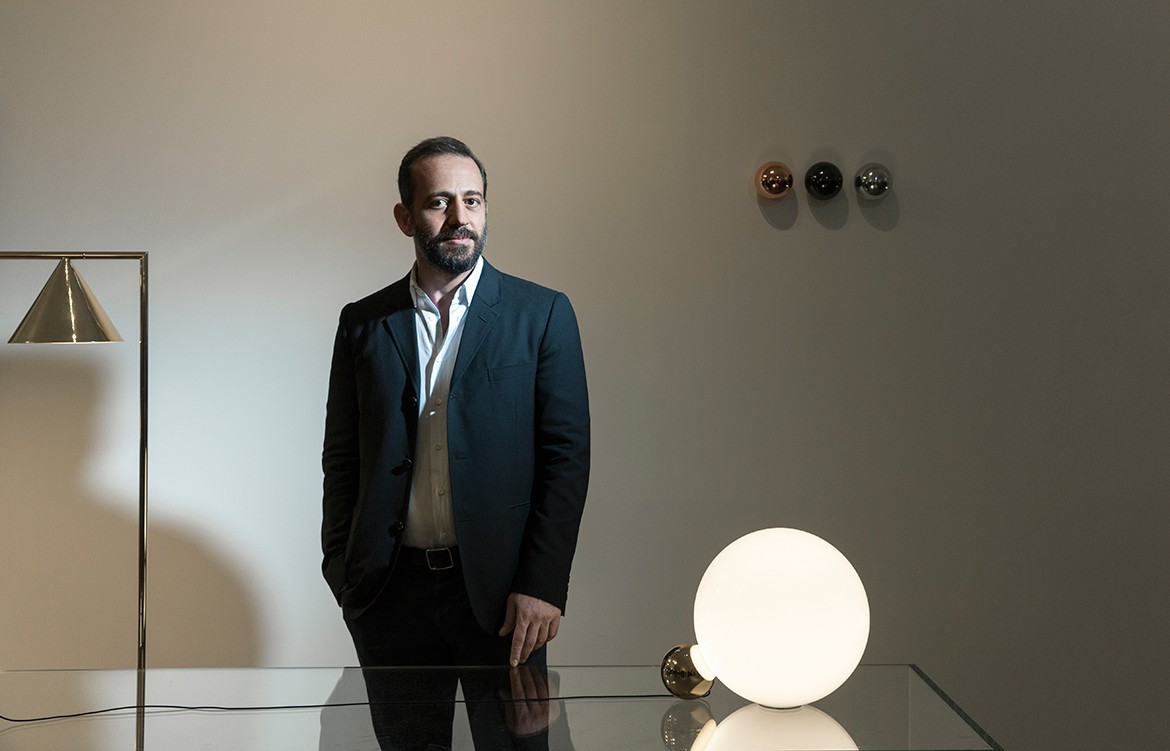ST: Mike, your own brand has existed for a decade now, and for the past few years you’ve gained global notoriety working with Flos. How have you negotiated the two aspects of your activity?
MA: The role model I understood when I was studying at the Royal College was that you must design for big brands working on royalty basis. So after graduation your main task was to endeavour to get brands interested in your work. But the truth is that brands aren’t interested in working with unknown designers. And as a creative, I felt that being stopped at the point where I have designed something and sign it over to a company to produce then slam the door in my face, this would be not only discouraging but counterproductive. Like all creatives, I wanted my work to evolve. A painter, for instance, can always produce work, whether somebody buys it or not or whether a gallery shows it or not. But with design it’s always very limited in the sense that while you may realise a work at the conceptual stage until it’s produced it doesn’t exist.
So the decision to launch your own brand was a survival strategy?
I felt that it was my duty to produce my work, even if it was a one-off or limited edition. If nobody wanted to work with me I needed to do it on my own in order to evolve as a creative. So I put a collection of pieces together to test the waters and the responses I received made my decision for me.
Your early work was vey conceptual, almost installation work. Did you make a conscious decision to gear up to more commercial products?
I felt I’d had a very short design education. I went from civil engineering at the Imperial College straight into a masters in design at the Royal College. So after only two years of creative education I felt that I needed to keep exploring my ideas. And those ideas revolved around a consideration of the role objects have or should have in our lives. So those first years were consciously exploratory, I didn’t really know what direction my work was going to take me, but I was committed to exploring. At the same time, I didn’t want to become some kind of intellectual of design. So I spent a lot of time thinking, How do you actually survive as a designer? I mean, an architect should build, a designer should have things made. I had a passion for everyday things, I appreciated the beauty of the everyday.
How did the transition from small own-brand to industrial design for Flos happen?
The first time I met with Piero Gandini, CEO of Flos, he said: I see you have your own brand. You know that we never work with designers who design for other brands? So I said, Does that mean you can’t work with me? Because if you’re asking me to give up what I’ve created, that’s never going to happen. So we settled very early on that I would continue my own brand. He was curious to see what I was doing. At that moment I was working on the String Lights for myself. I showed him the sketch book and he said, That’s for us. If he hadn’t wanted them for Flos I wold have produced them myself, but as it turns out they were the first part of my Flos catalogue.
I’ve always associated you with brass, but I believe that’s been contentious for Flos?
I’ve been designing in brass since my very first designs fifteen years ago. At the time brass was somehow stigmatised as old-fashion, which is bizarre. Do we really design according to fashion? What an absurd idea; brass is a beautiful material it has its place at any time. So, when I presented my second collection to Flos, the IC series I’d designed in brass. Piero immediately said, Brass doesn’t sell in Germany, we have to make it in chrome. I said, Well you can make it in chrome but you have to also make it in brass. And sure enough, I’d say around 80 per cent of the IC series that is sold is in brass.
You’ve been invited by Mobilia to do a talk as part of their Design Circus series, in Perth next Monday. What are you going to talk about?
Mobilia is an interesting distributer in Perth which offered to work with my brand, but independently of whether we were going to work with Mobilia or not, Sam Fazzari [CEO of Mobilia] is involved in a designer program in Perth which is about raising the awareness of contemporary designers.
What I’m going talk about is my journey in establishing a name in design. I took a long and meandering path to arrive where I am and I’m going to share that, talk about my early work, the conceptual years, and the development of a commercial presence both for my own brand and for industrial brands.
What is your advice to designers working in 2018 and beyond?
I don’t think there is any single route to get where you want to go. You just have to follow what you believe is the path for you.
See more here
Michael Anastassiades was in conversation with Stephen Todd.

